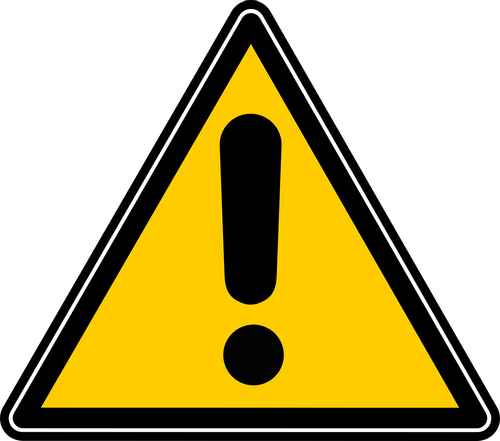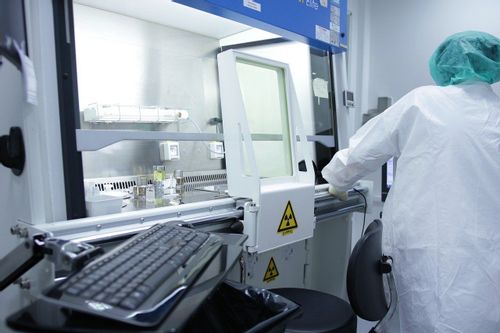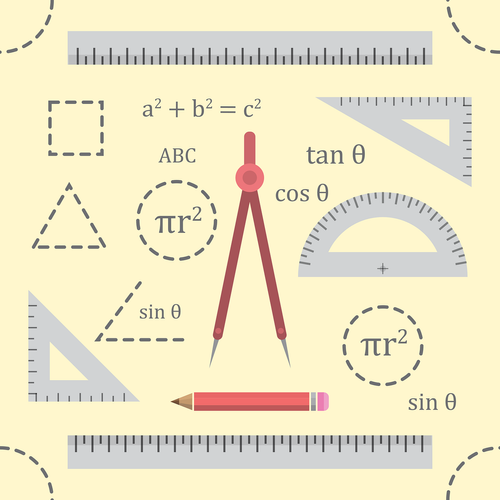Standards Packages
iTeh together with SIST has developed and compiled a comprehensive collection of standard packages to support your standard requirements. Our packages cover an array of content that includes quality management, risk management, road vehicles, machine safety, and much more. With over 200 packages to choose from, you are sure to find a collection to suit your standard needs.
Latest Standards
The network-based media processing (NBMP) framework defines the interfaces including both data formats and application programming interfaces (APIs) among the entities connected through digital networks for media processing. Users can access and configure their operations remotely for efficient, intelligent processing. This document describes and manages workflows to be applied to the media data. This process includes uploading of media data to the network, instantiation of the media processing tasks, and configuration of the tasks. The framework enables dynamic creation of media processing pipelines, as well as access to processed media data and metadata in real-time or in a deferred way. The media and metadata formats used between the media source, workflow manager and media processing entities in a media processing pipeline are also specified.
- Standard178 pagesEnglish languagesale 15% off
This document specifies physical and chemical requirements and test methods for oral rinses. It also specifies requirements on the accompanying information to be given in the manufacturer's instructions for use and on containers as well as the requirements for packaging. Common labelling aspects are specified in order to enhance international understanding and trade. This document is not applicable to other delivery systems (e.g. mouth sprays, foams, powders). It is not intended to describe regulatory aspects, e.g. methods of prescription. This document is not applicable to oral rinses available by prescription only.
- Standard8 pagesEnglish languagesale 15% off
- Standard9 pagesFrench languagesale 15% off
This document specifies a method of determining the water content of rocks. This document is applicable to the laboratory determination of the water content of a rock test specimen by oven-drying within the scope of geotechnical investigations. The oven-drying method is the definitive procedure used in usual laboratory practice. The practical procedure for determining the water content of a rock is to determine the mass loss on drying the test specimen to a constant mass in a drying oven controlled at a given temperature. The mass loss is assumed to be due to free water and is referenced to the remaining dry mass of the test specimen. NOTE This document fulfils the requirements of the determination of water content of rock for geotechnical investigation and testing according to EN 1997-2.
- Standard9 pagesEnglish languagesale 15% off
- Standard19 pagesFrench languagesale 15% off
This document specifies the method for non-destructive thickness measurement via the magnetic type of electrodeposited nickel coatings, also called “e-nickel”, on magnetic or non-magnetic substrates. It is possible that the method is not applicable to autocatalytic (electroless) nickel coatings, since these coatings are often non-magnetic due to their chemical composition. For the purposes of this document, two types of substrates are distinguished: a) nickel coatings on magnetic substrates (type A coatings); b) nickel coatings on non-magnetic substrates (type B coatings). Not all instruments are applicable to both types of coating. The effective measuring ranges of instruments using the principle of magnetic attraction are up to 50 µm for type A coatings and up to 25 µm for type B coatings. For instruments using the principle of reluctance, the effective ranges are much greater, up to 1 mm or even more. This method is applicable to both types of coatings.
- Standard8 pagesEnglish languagesale 15% off
- Standard8 pagesFrench languagesale 15% off
This document specifies a reference architecture for event-based syndromic surveillance systems for infectious diseases. The system reference architecture addresses architectural components including concepts, data sources, and outputs of syndromic surveillance system. From the perspective of the diagnostic process,[ REF Reference_ref_11 \r \h 11 08D0C9EA79F9BACE118C8200AA004BA90B0200000008000000110000005200650066006500720065006E00630065005F007200650066005F00310031000000 ] this document covers the processes from the symptom-onset stage to the health-behaviour stage, which is prior to the healthcare-encounter stage. Non-infectious health hazards, such as natural disasters, human-induced emergencies and chronic diseases, and their associated surveillance systems are beyond the scope of this document.
- Technical specification11 pagesEnglish languagesale 15% off
This document specifies a method to determine the resistance of geosynthetics to dynamic penetration by a steel cone dropped from a fixed height.
The method is generally applicable to geosynthetics. However, the applicability of this test for some types of products (such as e.g. GGR,GCE, GST,GBR) should be considered carefully .
- Standard14 pagesEnglish languagesale 10% offe-Library read for1 day
IEC 63522-24:2025 This part of IEC 63522 is used for testing along with the appropriate severities and conditions for measurements and tests designed to assess the ability of DUTs to perform under expected conditions of transportation, storage and all aspects of operational use.
This document defines a test to check that a multipole relay is capable of transferring one source to another.
- Standard10 pagesEnglish languagesale 10% offe-Library read for1 day
IEC 62840-1:2025 gives the general overview for battery swap systems, for the purposes of swapping batteries of electric road vehicles when the vehicle powertrain is turned off and when the battery swap system is connected to the supply network at standard supply voltages according to IEC 60038 with a rated voltage up to 1 000 V AC and up to 1 500 V DC.
This document is applicable for battery swap systems for EV equipped with one or more
– swappable battery systems (SBS), or
– handheld-swappable battery systems (HBS).
This document provides guidance for interoperability.
This document applies to
• battery swap systems supplied from on-site storage systems (for example buffer batteries etc),
• manual, mechanically assisted and automatic systems,
• battery swap systems intended to supply SBS/HBS having communication allowing to identify the battery system characteristics, and
• battery swap systems intended to be installed at an altitude of up to 2 000 m.
This document is not applicable to
• aspects related to maintenance and service of the battery swap station (BSS),
• trolley buses, rail vehicles and vehicles designed primarily for use off-road,
• maintenance and service of EVs,
• safety requirements for mechanical equipment covered by the ISO 10218 series,
• locking compartments systems providing AC socket-outlets for the use of manufacturer specific voltage converter units and manufacturer specific battery systems,
• electrical devices and components, which are covered by their specific product standards,
• any fix-installed equipment of EV, which is covered by ISO, and
• EMC requirements for on-board equipment of EV while connected to the BSS.
This first edition cancels and replaces the first edition of IEC TS 61280-1 published in 2016.
This edition includes the following significant technical changes with respect to IEC TS 61280-1:2016:
a) expanded scope to include handheld-swappable battery systems (HBS) and guidance on interoperability;
b) added definitions for "handheld-swappable battery system" (HBS) and expanded related terms such as "SBS/HBS coupler," "SBS/HBS charger," etc;
c) added classifications based on supply network characteristics, connection method, access and type of BSS;
d) added support for HBS, detailing the different compositions and workflows for type A (SBS) and type B (HBS) battery swap stations;
e) added requirements for functional interoperability, interface interoperability, data interoperability, operational interoperability, compatibility with legacy systems, and scalability;
f) added requirements for communication, protection against electric shock, specific requirements for accessories), cable assembly requirements, BSS constructional requirements, overload and short circuit protection, EMC, emergency switching or disconnect, marking and instructions;
g) expanded annex content, adding solutions for manual swapping stations for motorcycles with HBS and updating use cases.
- Standard37 pagesEnglish languagesale 10% offe-Library read for1 day
IEC 60730-2-14: 2025 applies to automatic electric actuators
• for use in, on, or in association with equipment for household appliance and similar use;
NOTE 1 Throughout this document, the word "equipment" means "appliance and equipment" and "control" means "electric actuator".
EXAMPLE 1 Electric actuators for appliances within the scope of IEC 60335.
• for building automation within the scope of ISO 16484 series and IEC 63044 series (HBES/BACS);
EXAMPLE 2 Independently mounted electric actuators for use in smart grid systems and for building automation systems within the scope of ISO 16484-2.
for equipment that is used by the public, such as equipment intended to be used in shops, offices, hospitals, farms and commercial and industrial applications;
EXAMPLE 3 Electric actuators for commercial catering, heating, and air-conditioning equipment.
• that are smart enabled;
• that are AC or DC powered electric actuators with a rated voltage not exceeding 690 V AC or 600 V DC;
• used in, on, or in association with equipment that use electricity, gas, oil, solid fuel, solar thermal energy, etc., or a combination thereof;
• utilized as part of a control system or controls which are mechanically integral with multifunctional controls having non-electrical outputs;
• using NTC or PTC thermistors and to discrete thermistors, requirements for which are contained in Annex J;
• that are mechanically or electrically operated, responsive to or controlling such characteristics as temperature, pressure, passage of time, humidity, light, electrostatic effects, flow, or liquid level, current, voltage, acceleration, or combinations thereof; as well as manual controls when such are electrically and/or mechanically integral with automatic controls.
NOTE 2 Requirements for manually actuated mechanical switches not forming part of an automatic control are contained in IEC 61058-1-1.
This document applies to
– the inherent safety of automatic electric actuators, and
– functional safety of automatic electric actuators and safety related systems,
– controls where the performance (for example the effect of EMC phenomena) of the product can impair the overall safety and performance of the controlled system,
– the operating values, operating times, and operating sequences where such are associated with equipment safety.
This document specifies the requirements for construction, operation and testing of automatic electric actuators used in, on, or in association with an equipment.
This document does not
• apply to automatic electric actuators intended exclusively for industrial process applications unless explicitly mentioned in the relevant part 2 or the equipment standard. However, this document can be applied to evaluate automatic electric actuators intended specifically for industrial applications in cases where no relevant safety standard exists;
• take into account the response value of an automatic action of an electric actuator, if such a response value is dependent upon the method of mounting the electric actuator in the equipment. Where a response value is of significant purpose for the protection of the user, or surroundings, the value defined in the appropriate equipment standard or as determined by the manufacturer will apply;
• address the integrity of the output signal to the network devices, such as interoperability with other devices unless it has been evaluated as part of the control syst
- Standard29 pagesEnglish languagesale 10% offe-Library read for1 day
This document specifies the characteristics of valves made from unplasticized polyamide (PA-U) in accordance with ISO 16486-1, intended to be buried and used for the supply of gaseous fuels.
NOTE 1 For the purpose of this document the term gaseous fuels include for example natural gas, methane, butane, propane, hydrogen, manufactured gas, biogas, and mixtures of these gases. Additional information about the suitability for 100 % hydrogen and its admixtures with natural gas is given by ISO 16486-1:2023, Annex C and Annex D.
It is applicable to isolating unidirectional and bi-directional valves with spigot ends or electrofusion sockets intended to be fused with PA-U pipes conforming to ISO 16486-2 and PA-U fittings conforming to ISO 16486-3.
This document also specifies the test parameters for the test methods it describes.
In conjunction with ISO 16486-1, ISO 16486-2, ISO 16486-3 and ISO 16486-5, this document is applicable to PA-U valves and their joints and to joints with components of PA-U and other materials intended to be used under the following conditions:
a) a maximum operating pressure (MOP) of up to and including 18 bar1), or limited to 16 bar under regional CEN requirements, at a reference temperature of 20 °C for design purposes;
NOTE 2 For the purpose of this document and the references to ISO 8233, MOP is considered to be nominal pressure.
b) an operating temperature of −20 °C to 40 °C;
NOTE 3 For operating temperatures between 20 °C and 40 °C, derating coefficients are specified in ISO 16486-5.
This document covers valves for pipes with a nominal outside diameter, dn, ≤400 mm.
- Standard30 pagesEnglish languagesale 10% offe-Library read for1 day
This part of IEC 60684 gives the requirements for two types of heat-shrinkable, polyolefin sleeving, stress control, not flame retarded, with a nominal shrink ratio up to 3:1.
This sleeving has been found suitable for use up to temperatures of 100 °C.
- Type A : Medium wall Internal diameter up to 65,0 mm typically
- Type B : Thick wall Internal diameter up to 95,0 mm typically
This sleeving is normally supplied in the colour black.
Since these types of sleevings cover a significantly large range of sizes and wall thicknesses, Annex A in this standard provides guidance to the range of sizes available. The actual size will be agreed between the user and the supplier.
Materials which conform to this specification meet established levels of performance. However, the selection of a material by a user for a specific application need to be based on the actual requirements necessary for adequate performance in that application and not based on this specification alone.
This sleeving is designed to be used in MV cable accessories and as such electrical performance will be proven as part of the assembly. Examples of this are described in HD 629 and IEC 60502 (all parts)
- Standard14 pagesEnglish languagesale 10% offe-Library read for1 day
This document specifies test methods for determining the radiant power and radiant energy of continuous wave and pulsed laser beams, as well as their temporal characteristics of pulse shape, pulse duration and pulse repetition rate. Test and evaluation methods are also given for the radiant power stability of cw-lasers, radiant energy stability of pulsed lasers and pulse duration stability.
The test methods given in this document are used for the testing and characterization of lasers.
- Standard28 pagesEnglish languagesale 10% offe-Library read for1 day
This document specifies the requirements for permanent paper intended for documents. It is applicable to unprinted papers. It is not applicable to boards.
NOTE 1 The terms paper and board are defined in ISO 4046-3.
This document is not intended for judging the permanence of papers stored under hostile conditions, such as high humidity that can promote microbiological attack, excessive heat, radiation (light or other), high levels of atmospheric pollutants, or the influence of water.
NOTE 2 For information on International Standards on paper permanence (ISO 9706), on archival paper permanence and durability (ISO 11108), and on paper stability for general graphic applications (ISO 20494), refer to Annex D.
- Standard19 pagesEnglish languagesale 10% offe-Library read for1 day
This document specifies the requirements and recommendations for the transportation of CO2 streams from the capture site to the storage facility where it is primarily stored in a geological formation or used for other purposes (e.g. for enhanced oil recovery or CO2 use).
This document applies to the transportation of CO2 streams by
— rigid metallic pipelines,
— pipeline systems,
— onshore and offshore pipelines for the transportation of CO2 streams,
— conversion of existing pipelines for the transportation of CO2 streams, and
— transportation of CO2 streams in the gaseous and dense phases.
This document also includes aspects of CO2 stream quality assurance, as well as converging CO2 streams from different sources.
Health, safety and environment aspects specific to CO2 transport and monitoring are also considered in this document.
Transportation of CO2 via ship, rail or on road is not covered in this document.
- Standard57 pagesEnglish languagesale 10% offe-Library read for1 day
IEC 63522-16:2025 This part of IEC 63522 is used for testing along with the appropriate severities and conditions for measurements and tests designed to assess the ability of DUTs to perform under expected conditions of transportation, storage and all aspects of operational use.
This document defines a standard test method for resistance to soldering heat and solderability for standard soldering processes.
- Standard15 pagesEnglish languagesale 10% offe-Library read for1 day
This document specifies particular test methods for the verification of requirements of ISO 19932-1:2025 for knapsack sprayers carried on the back or shoulder of the operator for use with plant protection products. It is applicable to lever-operated knapsack sprayers, knapsack compression sprayers and knapsack sprayers driven by an engine or electric motor using hydraulic pressure atomization of the spray liquid intended to be used primarily in agriculture, forestry and horticulture with a nominal volume of more than 6,0 l. It does not apply to knapsack combustion engine-driven air-blast sprayers covered by ISO 28139:2019+2019A1:2024. This document is intended to be applied in conjunction with ISO 19932-1:2025.
- Standard22 pagesEnglish languagesale 15% off
- Standard22 pagesFrench languagesale 15% off
This document defines the syntax and semantics of a file format for the 3D visualization and interrogation of lightweight geometry and product manufacturing information derived from CAD systems, using visualization software tools that do not need the full capability of a CAD system. This document has been adopted as a 3D visualization capability in addition to the ISO 10303 series. The ISO 10303 series are the ISO standards adopted for the engineering data exchange, sharing and long-term archiving of product definition information throughout the product lifecycle. In this document 3D visualization is defined as the visual presentation on a screen or another media of graphical and textual 3 dimensional representations of a set of data representing an object, information or results of a computational process in order to enable decision process by a human looking at the data visualized in a medium. The file format supports the following information: — facet information (triangles), stored with geometry compression techniques; — visual attributes such as lights, textures and materials; — product manufacturing information, such as dimensions, tolerances and other attributes; — boundary representation (b-rep) solid model shape representations. Several alternatives are available, including a representation based on the geometry standard defined in ISO 10303; — configuration representations; — delivery methods such as asynchronous streaming of content. The document does not specify the implementation of, or definition of a run-time architecture for viewing or processing of the file format.
- Standard664 pagesEnglish languagesale 15% off
This document provides context, motivation and use case descriptions for a set of Moving Picture Experts Group (MPEG) standards that collectively deliver media directly to render-based applications such as game engines with a renderer component, or standalone renderers. Emerging examples where such applications are especially relevant include metaverse applications and immersive displays where such displays provide an interface to renderers. This document: — describes the motivators leading to the development of new MPEG standards that facilitate the streaming of media to render-based applications; — differentiates between visual media distributed for video-based applications and visual media distributed to render-based applications; — provides an overview of a media workflow from content production to content distribution; — provides general information on relevant components of render-based systems including game engines and renderers — identifies key components and resources (compute, storage, or network) comprising a heterogeneous set of immersive displays and other render-based applications; — and documents use cases for end-to-end interoperability, including audio, video, graphics and systems aspects for render-based systems and applications.
- Technical report28 pagesEnglish languagesale 15% off
This document presents the main differences between the standards for working towers made of prefabricated elements in some regions and countries. It provides an analysis of different aspects, including product title, material performance, grade division, dimension requirements, product structure and design, test methods and fall prevention measures. This document gives guidance for the discussion of relevant technologies of working towers made of fibre-reinforced plastics, and also prepares for further development of applicable global technical standards for working towers.
- Technical report16 pagesEnglish languagesale 15% off
This document specifies the minimum information to be provided to the user by the manufacturers of microscopes with digital displays regarding imaging performance. It further specifies terms and definitions for describing the optical performance of the digital imaging path of microscopy systems including the observation of the image on digital displays. This standard does not apply to confocal microscopes. NOTE Terms and definitions for the direct visual observation with eyepieces are specified in ISO 8039 and ISO 10934.
- Standard15 pagesEnglish languagesale 15% off
Benefits

Full Standards Solution
Our catalog includes not only latest standards but also full meta information about related standardization project lifecycle.

Cost Effective
Our PRICE MATCH GUARANTEE policy with multi-level volume discounts gives our clients the best option in the market. In addition, you can get access to the standards for 3, 10, or 30 days.

Stay Notified
Get alerted to the latest revisions and new standards in the Weekly Newsletter. Standards are constantly changing. Don’t miss a revision that can impact your business.
About Us
iTeh Inc is a software development and IT consulting team of professionals who provide consulting, development and implementation of solutions for all types of businesses.
In cooperation, with the Slovenian Institute of Standardization (SIST), we create a unique solution that covers all aspects of the lifecycle of Standardization organizations. iTeh Standards is a part of the solution that helps SIST to provide and sell their products to Customers.
iTeh Standards Store is an evolving project, our goal is to build long-term relationships with our customers. We believe in delivering quality services to solve our customers' challenges and define success by exceeding our customers' expectations. We are always ready to listen and our experience allows us to provide our customers with helpful effective suggestions. You can contact us by email.
We are committed to providing the best possible experience for our customers.
Compliance with international standards is increasingly becoming one of the key competitive advantages in the global market. Our company creates all conditions for the most comfortable implementation of new documents and norms in the processes carried out by your organization. Some of the key advantages of working with us are:
- Cost-effective - multi-level discounts and permanent updates of the functions give our clients the best option on the market.
- e-Library - access to standards for a period of time of your choice. It is a cost-effective solution for keeping updated with the newest standards.
- Company-wide documents - create a company account and connect all employees with access to purchased standards, e-Library documents, and packages.
- All in one spot - all purchased standards are kept in one place with controlled access by the account administrator.
- Client-centric - providing quality consulting is the prerogative and incentive to create new products that accompany your success and scale.
- 24 / 7 client support
We are dedicated to building mutually beneficial and long-term relationships with our clients. That is why our team focuses on creating services to help our customers develop and achieve new productive results.
























